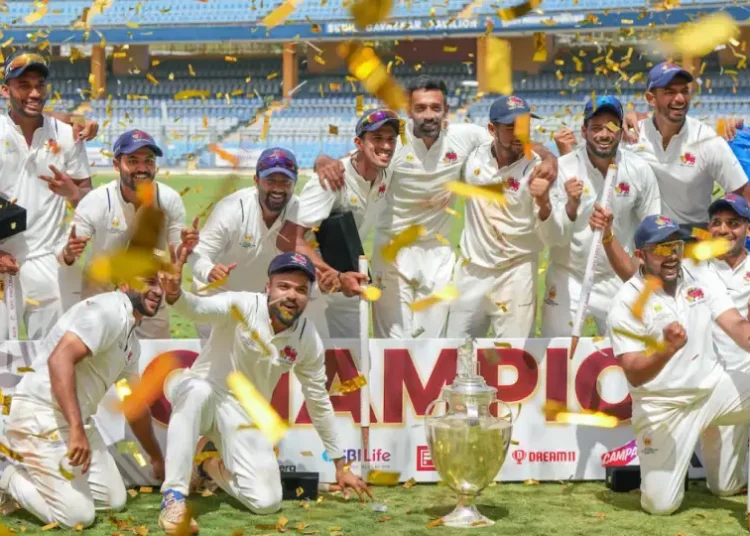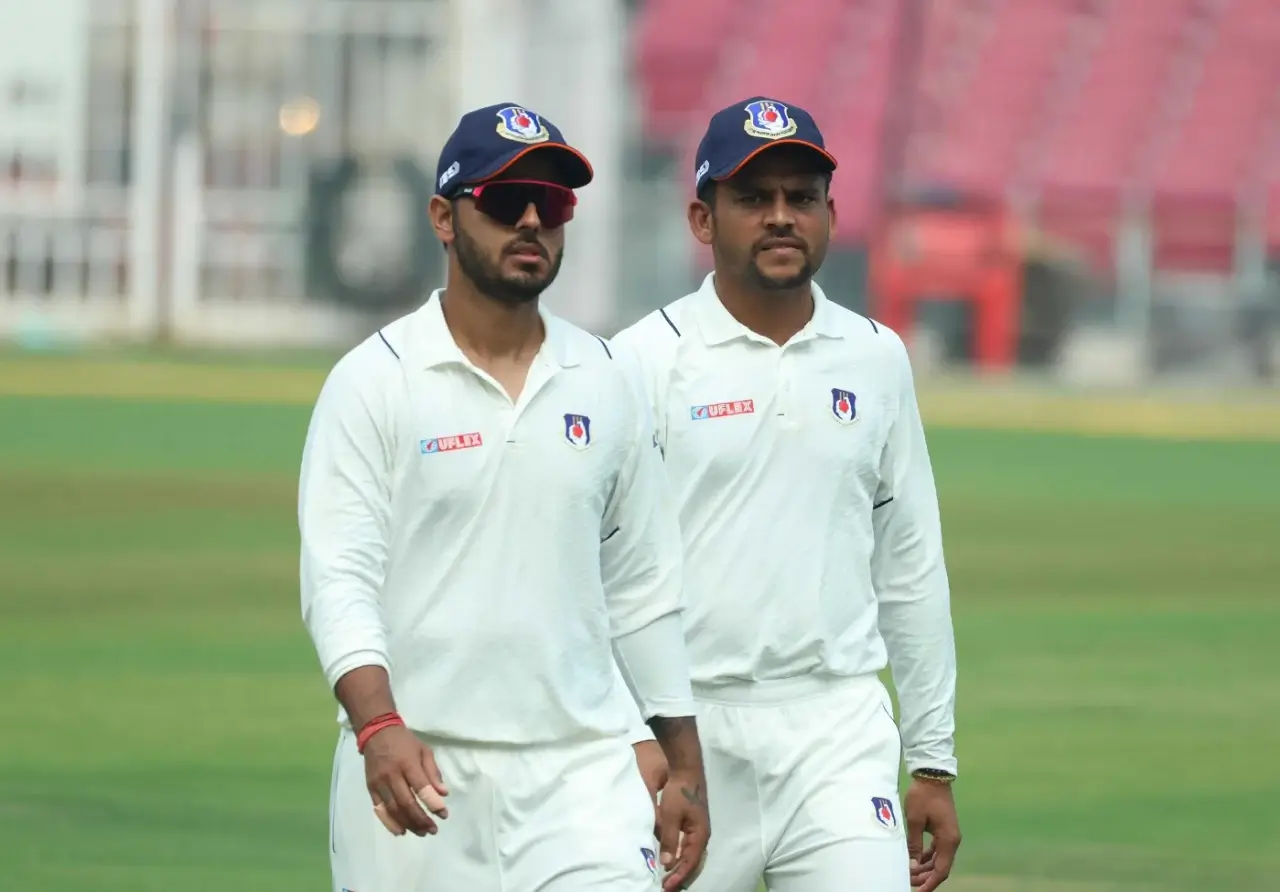The 2025-26 Ranji Trophy arrives with real drama and fresh intrigue. Thirty-two teams begin a long season from October fifteenth onward. The competition mixes title defence, big transfers, and exciting debuts. Fans will see 138 matches and several heavyweight clashes across groups.
Vidarbha entered as defending champions and Irani Cup winners this season. Mumbai arrives with a new captain in Shardul Thakur. Prithvi Shaw, Jalaj Saxena and Ishan Kishan headline notable transfers and captaincies. Players such as Danish Malewar and R. Smaran raise hopes among selectors and fans, which is why India dominates the timeline against teams.
The tournament is split into two phases around the white-ball window in December. Ranji resumes early in the new year before knockouts in February. This calendar allows players to switch formats and regain form quickly. It also puts a premium on squad depth and player management.
This extended preview covers teams, players, tactical lessons, and key fixtures to follow. It uses only the facts provided in your brief above. The aim is clear: prepare readers for a must-watch domestic season.
Format, schedule and what changes this season brings
The Ranji Trophy follows the two-phase structure again this season. Five initial rounds run from October 15th to November 19th. Then a white-ball window interrupts with the SMAT and Vijay Hazare events. Ranji resumes late January for two final league rounds and knockouts in February.
Thirty-two Elite teams are split into four groups of eight this year. The top two teams from each group reach the quarter-finals. Six Plate teams play a round-robin with the top two contesting the Plate final. This clear structure rewards consistent performance across long periods.
The split calendar helps players manage workload across red-ball and white-ball formats. It also creates tactical choices for state selectors and franchises. Domestic coaches must plan rotation, rest, and batting orders carefully. The mid-season break could also influence momentum for teams aiming for knockout spots.
For fans, the format guarantees key matchups early and late in the season. The schedule also places greater emphasis on squad depth and fitness. Teams with broader rosters can navigate the white-ball phase without losing red-ball rhythm. That strategic balance may decide who advances to the quarter-finals.
How does the two-phase schedule affect player selection and fitness?
The mid-season white-ball window forces selectors to think ahead now. Teams must balance red-ball priorities with T20 and 50-over commitments. Players may be rested or rotated to preserve form and fitness. This makes early Ranji rounds crucial for players seeking attention.
Workload management becomes central for young quicks and spin options alike. Coaches must monitor recovery and training intensity carefully. Players selected for multiple formats will need precise conditioning plans. These choices will shape team fortunes across the season’s long grind.
Key teams and transfers to watch this Ranji season
Vidarbha returns as defending champions with confidence and continuity. Their depth and recent Irani Cup success make them strong contenders again. Mumbai remains a perennial threat despite last season’s semi-final loss. New captain Shardul Thakur adds fresh leadership to Mumbai’s long pedigree.
Major transfers will alter the dynamics in several groups significantly this year. Prithvi Shaw’s move to Maharashtra reshapes their top order instantly. Jalaj Saxena’s joining Maharashtra strengthens their middle and lower order stamina. Ishan Kishan returns to captain Jharkhand, adding leadership and experience up front.
Rajat Patidar and Abhimanyu Easwaran remain players to watch for form returns. Karun Nair’s return to Karnataka adds class and stability in the middle order. Jitesh Sharma’s move to Baroda and Hanuma Vihari’s transfer to Tripura add further narrative depth. These changes make group stages unpredictable and engaging.
Teams that manage transfers well will gain an immediate advantage. Local boards that back new recruits provide better infrastructure and coaching. The competitive balance across groups increases with these bold signings. Expect surprising results and shifting momentum through the initial rounds.
Why transfers matter more than ever in domestic cricket?
Transfers bring instant tactical shifts and balance to state sides this year. A strong signing can change batting depth and bowling options overnight. Teams that recruit wisely convert transfers into a tactical edge quickly. Player settling and local support matter greatly for transfer success too.
Franchises and selectors now monitor such moves closely for future national call-ups. Transfers also reinvigorate players who need new challenges. The Ranji season will test whether transfers deliver consistent returns under red-ball demands.
Emerging players and spin options to follow closely
Fresh names will define several teams across this Ranji edition. Danish Malewar’s 783 runs last season make him a focal point for Vidarbha. R Smaran impressed in debut campaigns and can anchor Karnataka’s middle order. Priyansh Arya’s red-ball initiation after IPL success will interest Delhi supporters.
Spin depth will attract selector scrutiny with Ashwin retired and Jadeja ageing. Harsh Dubey leads the wicket-takers list from last season, making him one to watch. Manav Suthar and Tanush Kotian add variety with left-arm and off-spin options respectively. These spinners could step into bigger roles for India soon.
Fast-bowling pockets also hold excitement across the country. Eden Apple Tom, Gurnoor Brar and Gurjapneet Singh headline a new seamer pool. Their pace, accuracy and seam movement are useful in conditions favoring swing and bounce. Development programs will track these bowlers closely for international potential.
Selectors will place high value on all-format consistency and red-ball temperament. Young batters and seasoned spinners who adapt across conditions will likely gain attention. Expect scouting lists to expand following standout Ranji performances.
How can spin careers be accelerated in this Ranji season?
Strong Ranji showings against quality batters fast-track spinner reputations significantly. A consistent wicket tally over the early rounds raises selector interest quickly. Support from state coaches and match exposure in tougher conditions helps growth. Spinners who combine control with subtle variations gain an immediate advantage.
For many young spinners, this season offers a pathway to India A and higher recognition. Strong performances paired with fitness and workload planning can shape national futures. Coaches must back promising spinners through rotations and targeted game time.
Why IPL exposure and white-ball windows change Ranji tactics?
The mid-season white-ball window makes Ranji strategies layered and complex this season. Players aim to impress in Ranji, SMAT, then Vijay Hazare across tight timelines. IPL mini-auction in December adds incentive for strong white-ball displays. Teams must balance red-ball patience with T20 shot-making readiness simultaneously.
This rhythm pressures selectors to manage players across formats carefully. Young players might prioritise T20 earnings or red-ball credentials strategically. State boards must negotiate with franchises on player workloads and commitments. The teams that sync these demands will find consistent results across formats.
For coaches, training plans will include varied net sessions tailored to each format. Players need to switch mindsets quickly from patient innings building to explosive hitting. This adaptability is now a core requirement for modern domestic stars. Ranji performance combined with T20 form can offer a strong selection narrative.
Ultimately, the Ranji Trophy remains the primary red-ball proving ground despite format overlaps. Strong Ranji form still signals Test temperament and long-innings ability. Players who balance both formats effectively will stand out to national selectors.
Managing dual-format ambitions for young players
Young players must learn to separate technique from mindset across formats. Coaches should design split training blocks for red-ball and white-ball skills. Skills like strike rotation and pressure-handling are crucial across formats. Management must protect young pace bowlers with measured workloads and recovery.
Clear communication between franchises, state boards, and players reduces burnout risks. Players who master format-switching will enjoy broader selection opportunities soon.
Key fixtures and early-round matches that will define the season
Round one already offers enticing matchups for fans and selectors alike. Tamil Nadu host Jharkhand on October fifteenth in a headline fixture. Kerala versus Maharashtra pits Jalaj Saxena against his former team in a spicy opener. Saurashtra meeting Karnataka promises a heavyweight clash early in the campaign.
Matches between Mumbai and other traditional heavyweights will always attract attention. Vidarbha’s opening fixtures will be closely watched for title-defence signals. Teams facing early injuries or player absences during the white-ball window may struggle for rhythm later. Group-stage momentum is crucial given the limited number of rounds.
Promising youngsters and transfers will make their first impressions quickly in these fixtures. Selectors and franchises will monitor these matches for immediate form and temperament signals. Fans should expect close contests and a few surprise results in opening rounds. Those early outcomes will shape quarter-final contenders significantly.
Plan ahead for key dates to catch potential breakout performances. Early coverage, social shares, and highlights will drive initial indexing and search traction for news sites. These fixtures will offer fast content opportunities and search queries around emerging players.
How early fixtures influence quarter-final chances?
Early wins build confidence and net positive momentum for teams. Teams that rotate players smartly can avoid fatigue before the white-ball window. A strong start reduces pressure to chase results later in the season. Conversely, slow starters face harder paths to secure a top-two group finish.
Coaches should prioritise key matchups and avoid unnecessary rotation in pivotal early games. Winning the first rounds often means controlling qualification scenarios strategically.
Conclusion
The 2025-26 Ranji Trophy promises a full blend of experience, youth, and strategic juggling. Defending champions Vidarbha, traditional giants like Mumbai, and bold transfer stories will make headlines. Emerging spinners and seamers will seek to turn domestic form into national chances quickly. The two-phase schedule and white-ball windows require clear planning and squad depth.
Fans can expect gripping early fixtures, surprise results, and breakout performances from young batters. Coaches and selectors will be busy managing workloads between formats and auctions. Publish content fast, use rich schema, and push social snippets to capture initial search interest. This season will reward teams that combine depth with tactical clarity.







